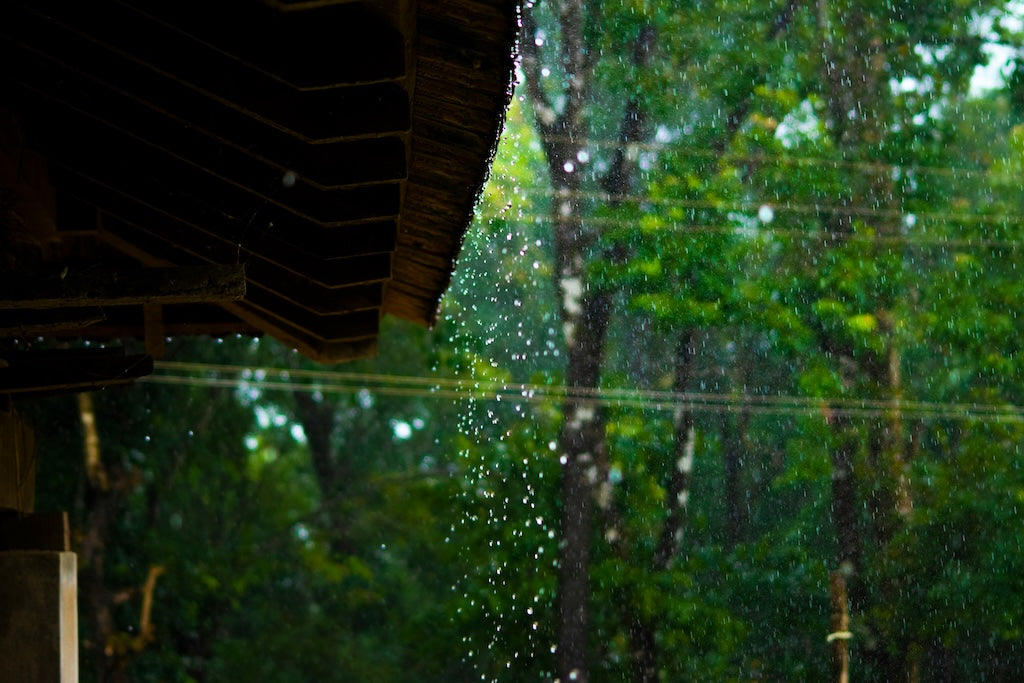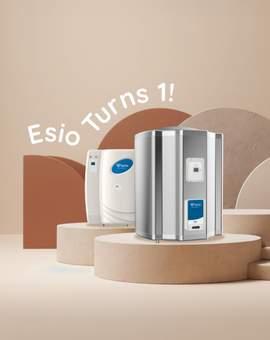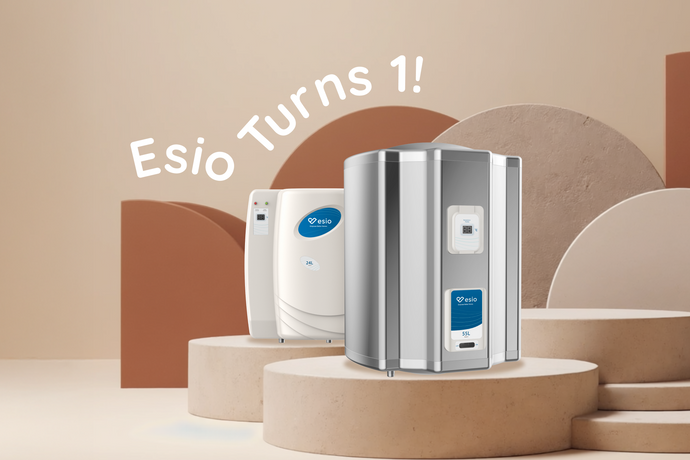Introduction
In today’s modern homes, hot water is more than a luxury, it’s a daily necessity. Whether it’s for refreshing showers, cleaning, or daily chores, a reliable water heating system is essential for comfort and convenience.
With several options available, Malaysian landed house homeowners are often faced with the decision of choosing between solar and storage water heaters, particularly when higher hot water demand and comfort are priorities. While both systems offer distinct advantages, the right choice depends heavily on climate, installation environment, and daily usage patterns.
This article explores the practical differences between the two, with a focus on why storage water heaters offer a more consistent and cost-effective solution, especially during Malaysia’s frequent rainy and overcast weather. We'll cover:
- Understand the Basic
- Weather Considerations in Malaysia
- Cost Analysis
- Practicality and Convenience
- Conclusion
Understand the Basics
What is a Storage Water Heater?
A storage water heater is an electric-powered system that heats and stores hot water in an insulated tank, making it readily available for use when needed. Once the water reaches the desired temperature, the system maintains it within the tank until it is drawn for use. This ensures a consistent supply of hot water without waiting for the heating process to begin.

Key Benefits:
- Reliable performance regardless of weather or time of day
- Immediate hot water availability for showers, cleaning, and household use
- Ideal for families with higher or consistent hot water demands
What is a Solar Water Heater?
A solar water heater uses solar collectors, typically installed on rooftops, to absorb sunlight and convert it into heat. This heat is then transferred to water stored in an insulated tank. The system operates most efficiently under direct sunlight and can significantly reduce electricity consumption over time.

However, its performance is directly affected by weather conditions and solar exposure. To compensate, most solar water heaters are equipped with a backup electric heating element that activates on cloudy or rainy days to ensure a continuous supply of hot water. While this offers convenience, it also increases electricity usage—particularly in countries like Malaysia, where frequent rainfall and prolonged overcast conditions are common.
Benefits:
- Energy-efficient and eco-friendly, reducing reliance on electricity
- Lower long-term energy costs, especially in sunny climates
Limitations:
- Weather-dependent, performance drops significantly on cloudy or rainy days
- Requires a larger installation space, often on rooftops, and cannot be installed in non-landed properties such as condominiums
- Need a backup heating system to maintain comfort during extended overcast periods
Comparison: Storage Water Heater vs Solar Water Heater:
|
Feature |
Storage Water Heater |
Solar Water Heater |
|
Hot Water Availability |
Instant, anytime |
Dependent on sunlight |
|
Energy Source |
Electricity |
Sunlight with optional electric backup |
|
Performance in Rainy Weather |
Unaffected |
Significantly reduced |
|
Installation Complexity |
Simple wall-mounted setup |
Requires rooftop space for solar panels |
|
Initial Cost |
Moderate |
High for both unit and installation costs |
|
Operating Cost |
Predictable, low with efficient use |
Low, but may increase with backup electricity usage |
|
Space Requirement |
Compact unit |
Requires outdoor roof space + tank |
|
Maintenance |
Minimal |
Requires regular cleaning and servicing |
Weather Considerations in Malaysia
Malaysia’s Tropical Climate
Malaysia experiences a tropical rainforest climate, characterized by high humidity, abundant rainfall, and relatively stable temperatures year-round. According to the Malaysian Meteorological Department (MET Malaysia), the country receives an average annual rainfall of 2,000 mm to 2,500 mm, with certain coastal and highland areas receiving even more.
 Photo by TARUN RAJ BN on Unsplash
Photo by TARUN RAJ BN on Unsplash
Frequent Rainfall and Cloudy Conditions
Rainfall is distributed throughout the year, but two major monsoon seasons, the Southwest Monsoon (May to September) and the Northeast Monsoon (November to March) bring intensified downpours, prolonged cloudy days, and occasional storms. These conditions significantly reduce sunlight exposure for several days or even weeks at a time.
Official data shows that Malaysian cities experience rain on more than half the days in a year. In Kuala Lumpur, rainfall is recorded on approximately 64.3% of the days annually, equivalent to around 235 days per year. Johor Bahru, a key southern city, experiences rain on about 57.1% of the days, or roughly 208 days annually. These frequent rainy and overcast conditions significantly limit direct sunlight exposure, which solar water heaters rely on to operate efficiently and maintain consistent water temperatures.
Monsoon Season Impact on Solar Water Heaters
During these prolonged rainy periods, solar water heaters may struggle to maintain consistent water temperatures. As sunlight becomes insufficient, many households are forced to rely on backup electric heating elements, which can diminish the energy-saving benefits originally intended with solar systems.
In contrast, storage water heaters operate independently of weather conditions, providing stable and reliable hot water regardless of the climate. This makes them especially suitable for Malaysian homes where weather unpredictability is a year-round concern.

Reduced Efficiency During Overcast and Rainy Days
Solar water heaters are designed to operate at peak efficiency under direct sunlight. However, in Malaysia—where over 50% of the year experiences rainfall or cloud cover, solar systems struggle to maintain optimal performance. During extended overcast periods, such as during the Northeast Monsoon, solar panels receive significantly less solar radiation, resulting in slower heating and inconsistent water temperatures.
To compensate, many solar systems are installed with backup electric heating elements or require larger-capacity storage tanks to preserve pre-heated water. These additional components increase both installation complexity and electricity consumption, particularly during Malaysia’s prolonged rainy seasons.
Reliability of Storage Water Heaters
In contrast, storage water heaters offer consistent and reliable performance year-round, regardless of weather conditions. Because they heat water using electricity and store it in insulated tanks, they are unaffected by sunlight availability or climate patterns. This ensures steady access to hot water for showers, cleaning, and daily household needs, even during weeks of heavy rain or low sunlight.
Storage water heaters are especially suitable for families who prioritise convenience and consistent hot water without the unpredictability of solar energy fluctuations.

Cost Analysis: Upfront & Ongoing Expenses
Initial Costs
When evaluating water heater systems, upfront investment is a key consideration. Solar water heaters typically come with a much higher initial cost due to their complexity. Requiring solar panels, a rooftop tank, plumbing, structural reinforcements, and a backup electric heater.
|
System Type |
Estimated Cost |
|
Solar Water Heater |
RM4,000 - RM20,000+ |
|
Storage Water Heater |
RM500 - RM4,000+ |
In contrast, storage water heaters offer a more affordable and flexible installation, with compact wall-mounted or floor-standing designs that don’t require roof space or extensive modifications, making them ideal for most Malaysian homes, including high-rise residences.
Maintenance and Operational Costs
Maintenance Requirements
-
Solar water heaters require frequent servicing, including:
- Cleaning of solar panels
- Inspection of valves, pumps, and electrical backup systems
- Potential issues with leaks or corrosion in rooftop installations
- Storage water heaters are generally low maintenance, especially modern units with corrosion-resistant tanks, built-in safety systems, and robust electrical components.
Operating Costs & Hidden Expenses
Solar water heaters often appear to offer "free energy," but Malaysia’s high rainfall means these systems frequently switch to backup electric heating, which consumes significant electricity.
Backup Heating: Real-World Energy Comparison
Let’s explore the actual energy efficiency difference between solar and storage water heaters through a usage simulation during Malaysia’s frequent rainy days.
|
Model Type |
Tank Size |
Heating Power |
Time to Heat (30°C to 65°C) |
Energy Used (1 Heating) |
|
Typical Solar |
300L |
3kW |
4.2 hours |
12.6 kWh per cycle |
|
Standard Storage |
100L |
3kW |
1.2 hours |
3.6 kWh per cycle |
|
Esio EM-5538H |
55L |
3.8kW |
0.61 hours |
2.31 kWh per cycle |
Even though all systems heat water to the same temperature, solar heaters consume over 5 times more electricity on rainy days due to their large tank size (typically 300L for a landed home with 5 bathrooms). In comparison, Esio’s 55L model delivers the same comfort with far less energy, and even outperforms a typical 100L storage water heater in efficiency—making it a smarter, more compact choice for Malaysian homes.
Annual Energy Use During Rainy Days (57% of Days)
|
Model Type |
Annual Rainy Days (57%) |
Daily Usage (Rainy) |
Estimated Annual Energy Use |
|
Solar 300L |
208 days |
12.6 kWh |
2,621 kWh |
|
Solar 160L |
208 days |
6.71 kWh |
1,396 kWh |
|
Standard Storage Heater 100L |
365 days |
3.6 kWh |
1,314 kWh |
|
Esio 5538H |
365 days |
2.31 kWh |
843 kWh |
Even if we reduce rainy days to just 30%, the Solar 300L unit would still consume approximately 1,380 kW/year, which is still more than Esio’s full-year usage.
 Photo by Trinh Trần from Pexels
Photo by Trinh Trần from Pexels
Ongoing Maintenance Costs
|
Category |
Storage Water Heater |
Solar Water Heater |
|
Maintenance Frequency |
Low – typically once a year tank flushing (depends on water quality) |
High – requires regular servicing of panels, sensors, valves, and backup heater |
|
Component Exposure |
Fully indoor installation, sealed and protected |
Exposed to weather elements (sun, rain, dust), increasing wear and tear |
|
Structural Requirements |
No structural reinforcement needed |
Requires strong rooftop structure, proper angle, and secure mounting |
|
Common Issues |
Rare – mostly related to internal thermostat or tank scaling |
Leaks, corrosion, sensor failure, pump and valve malfunction |
|
Servicing Cost |
Low, easy access for inspection and service; RM120 - RM150 per session |
Higher, as rooftop access needed; RM500 - RM800 per session |
While solar water heaters seem eco-friendly, their backup energy consumption during rainy periods, higher installation complexity, and ongoing maintenance requirements result in significantly higher long-term costs.
By contrast, Esio storage water heaters provide:
- Faster heating
- Reliable performance year-round
- Lower electricity use
- Minimal maintenance hassle
This makes them a more practical and cost-effective choice for most Malaysian households, especially during the long rainy and monsoon seasons.

1-Year Cost Summary: Initial + Ongoing Expenses at a Glance Cost
|
Category |
Esio Storage Water Heater (5538H) |
Solar Water Heater (300L) |
|
Initial Equipment + Installation |
RM2,999 |
RM6,000 |
|
Electricity Consumption |
2.31 kWh/day × 365 = 843 kWh/year |
12.6 kWh × 208* days = 2,621 kWh/year |
|
Electricity Cost |
843 x RM0.57 = RM480 |
2.621 x RM0.57 = RM1,494 |
|
Estimated Maintenance |
RM150 |
RM800 |
|
Total 1-Year Cost |
RM3,629 |
RM8,294 |
(*Assumes 57% rainy days require electric backup for the solar system.)
By choosing an Esio Storage Water Heater, you not only save on the initial setup, but also enjoy significantly lower electricity bills and maintenance costs year after year.
Practicality and Convenience in Everyday Use
When choosing a water heating system for your home, it’s not just about cost or efficiency, but it’s also about how easily the system integrates into your lifestyle and living space. Here’s how storage water heaters offer superior practicality and day-to-day convenience compared to solar water heaters in Malaysian households.
 Photo by Clay Banks on Unsplash
Photo by Clay Banks on Unsplash
Space & Installation Considerations
Solar water heaters typically require substantial roof space to accommodate 2 to 3 solar panels, along with a large rooftop storage tank. Installation demands proper sun exposure, structural reinforcement, and a complex plumbing layout to connect rooftop components to indoor bathrooms. These requirements make solar systems less flexible and often unsuitable for high-rise residences or homes with limited roof access.
In contrast, storage water heaters are designed with versatility in mind. Compact and space-saving, they can be easily wall-mounted or installed above ceiling, making them ideal for both landed homes and condominiums. They integrate seamlessly during renovations or retrofits without the need for rooftop infrastructure.
Convenience and Accessibility
Beyond installation, storage water heaters shine in everyday use. Solar systems depend heavily on weather conditions and often take hours to reheat water after cloudy or rainy periods. This can lead to inconsistent performance and delayed hot water availability.
Storage water heaters, on the other hand, provide fast and reliable hot water, regardless of the time of day or weather. Their well-insulated tanks retain heat efficiently, allowing for quick reheating and steady temperature control. Users enjoy the comfort of a warm shower even on the coldest, rainiest mornings, without waiting or worrying about sunlight.
 Additionally, maintenance is far simpler with storage water heaters. Unlike solar systems, which require regular cleaning of panels and routine inspections of sensors and valves, storage water heaters mainly require annual inner tank cleaning, depending on local water quality. With fewer external components and minimal exposure to outdoor elements, they are significantly easier and more cost-effective to maintain over time.
Additionally, maintenance is far simpler with storage water heaters. Unlike solar systems, which require regular cleaning of panels and routine inspections of sensors and valves, storage water heaters mainly require annual inner tank cleaning, depending on local water quality. With fewer external components and minimal exposure to outdoor elements, they are significantly easier and more cost-effective to maintain over time.
Conclusion
Choosing the right water heating solution is a crucial decision for any household. While solar water heaters may seem attractive for their environmental benefits, their reliance on weather conditions, high installation costs, and slower heating performance during Malaysia’s frequent rainy seasons can limit their practicality.
In contrast, storage water heaters offer fast, consistent, and reliable hot water regardless of climate, while also being more affordable to install and easier to maintain. Their compact size and flexible installation options make them ideal for a wide range of homes, from landed properties to high-rise condos.
For Malaysian families who value everyday comfort, energy efficiency, and peace of mind, storage water heaters stand out as the smarter and more dependable choice—especially during the country’s long monsoon periods.
 Photo by Jan Van Bizar
Photo by Jan Van Bizar
Beyond cost and reliability, homeowners should also consider future-proofing their rooftops. A typical solar water heater may occupy 4 to 6 solar collector panels’ worth of space, which could otherwise be used to install solar PV panels for electricity generation. This sacrifice could mean missing out on RM150–RM250 in electricity savings per month, or up to RM2,400 per year.
Choosing a wall-mounted storage water heater frees up that valuable rooftop real estate, empowering homeowners to install solar panels in the future and fully optimize their energy savings.
Ready to upgrade your bathing experience?
Explore Esio Storage Water Heaters, trusted by thousands of households and backed by patented innovation tailored for Malaysia’s climate.
Visit my.esiohome.com or chat with our team to find the perfect model for your home.
Disclaimer: Savings estimates and calculations are based on assumptions under Malaysia’s NEM 3.0 program, which ended on 30 June 2025. Future incentive structures may change, please refer to official updates from the Sustainable Energy Development Authority (SEDA) for the latest program information.



